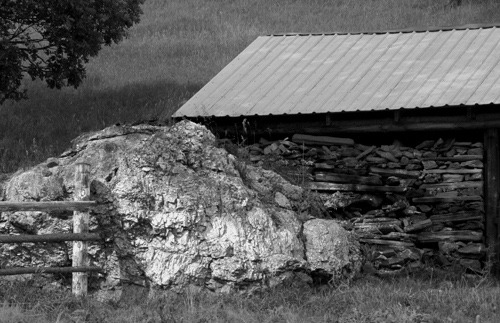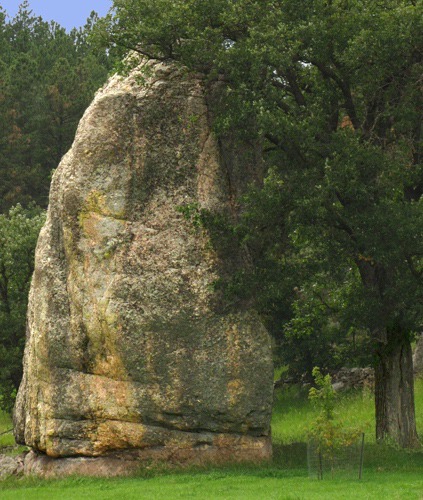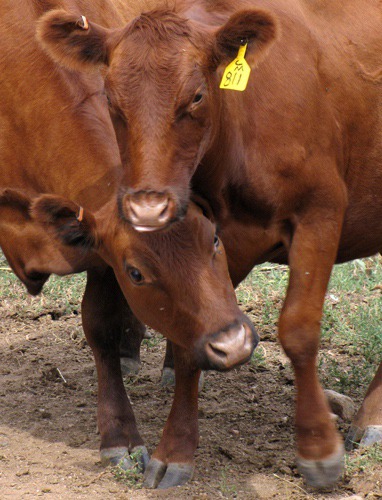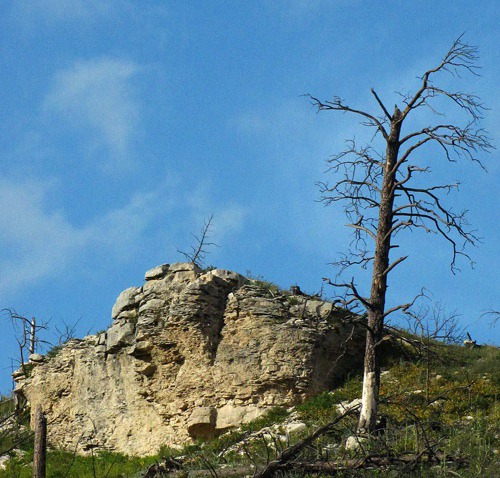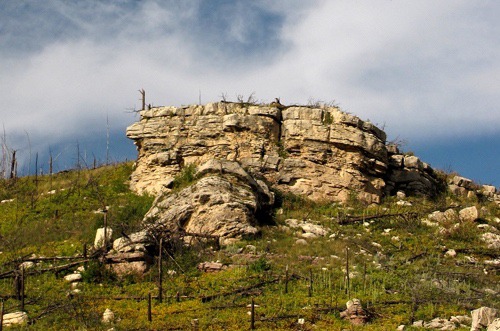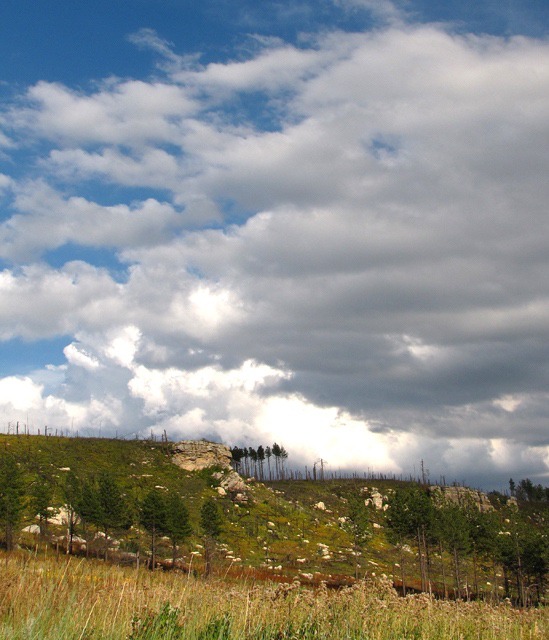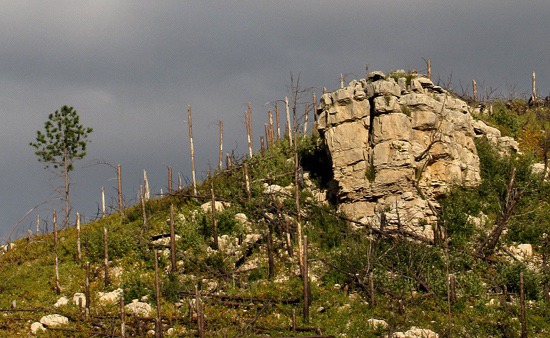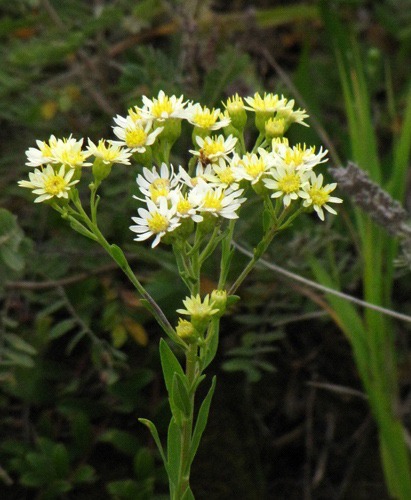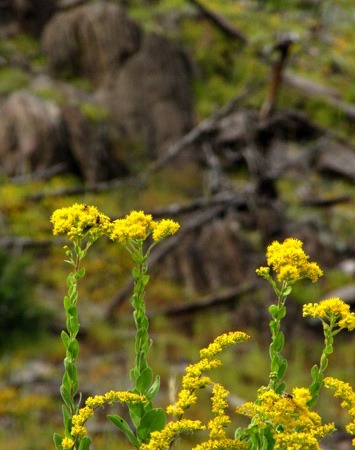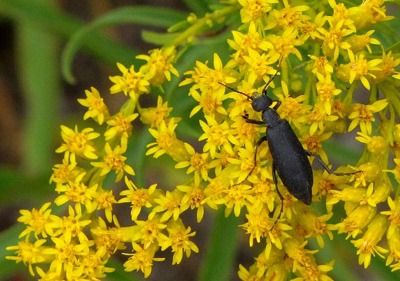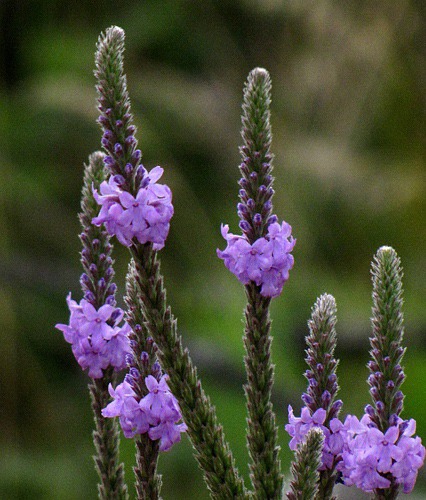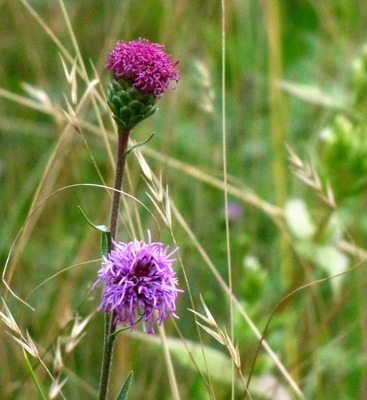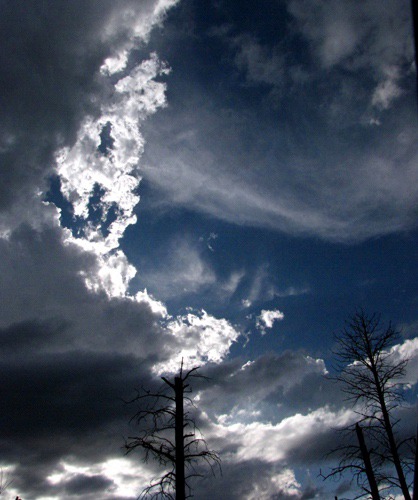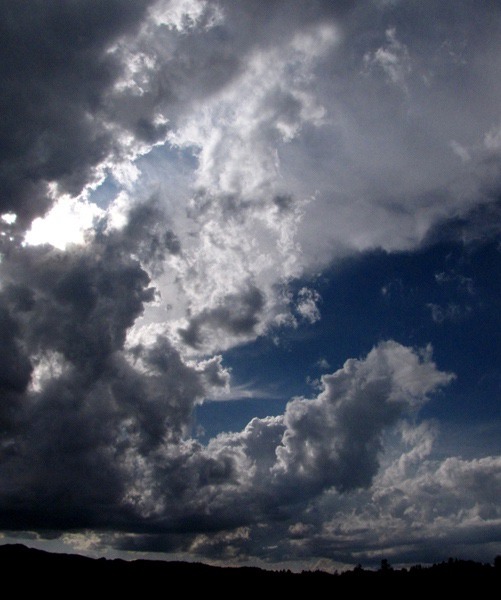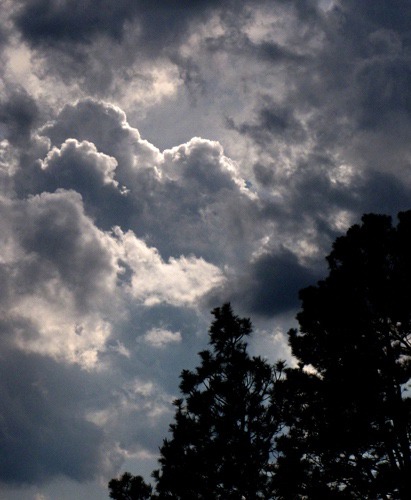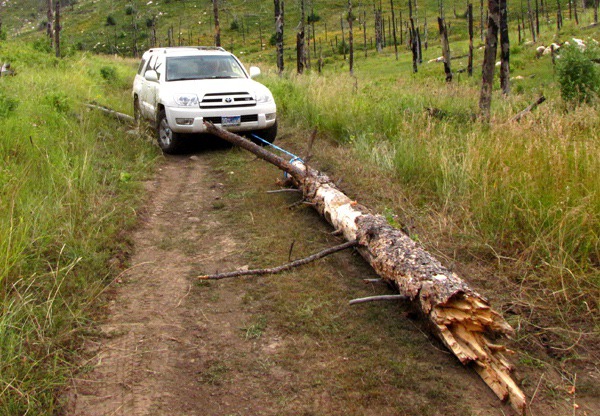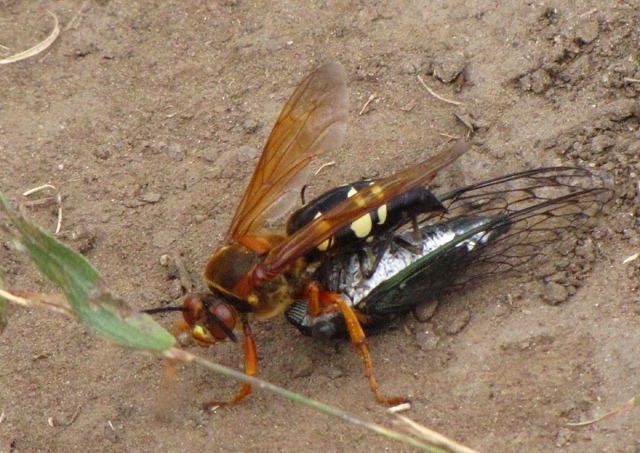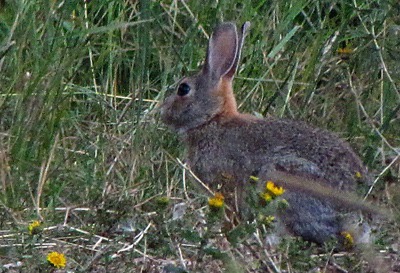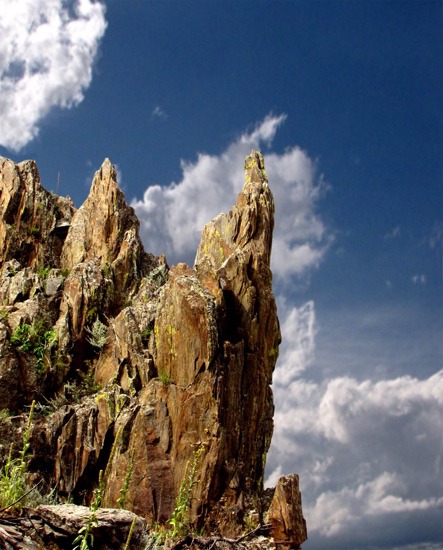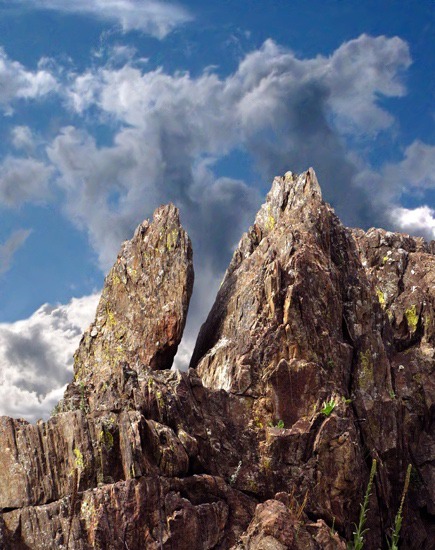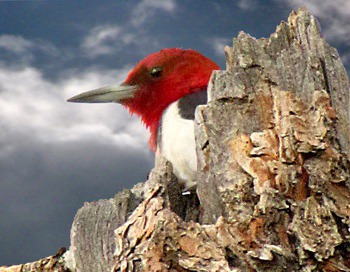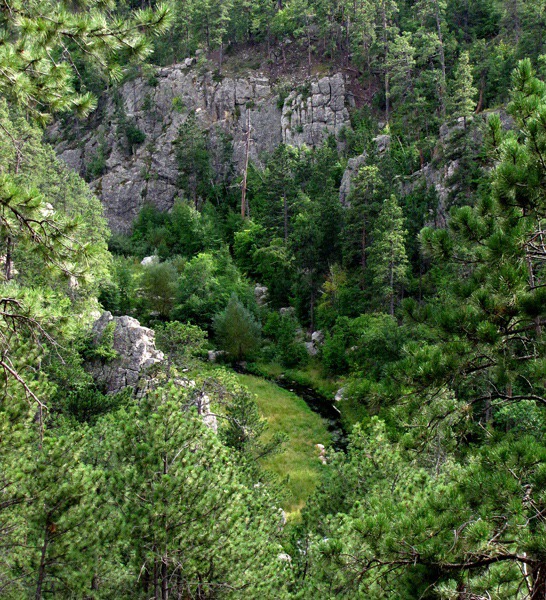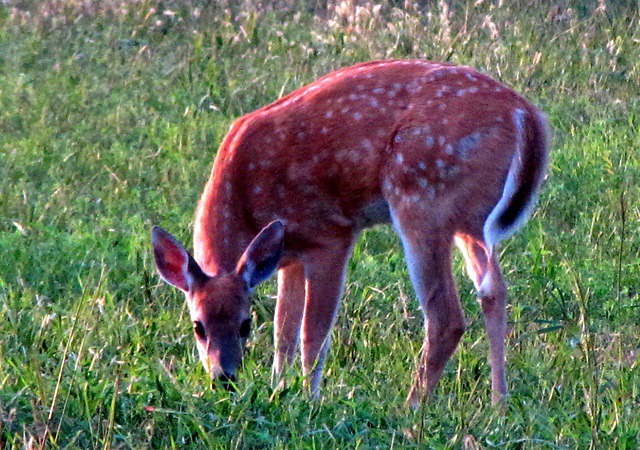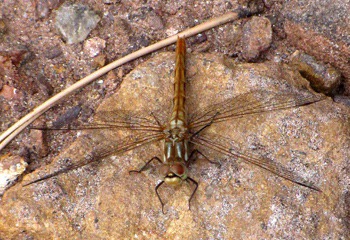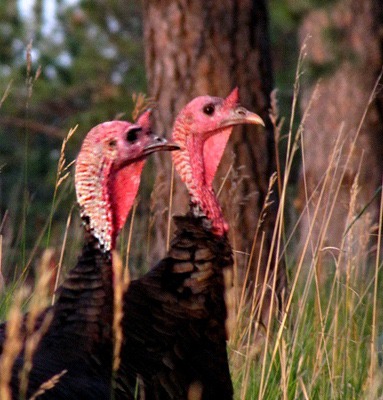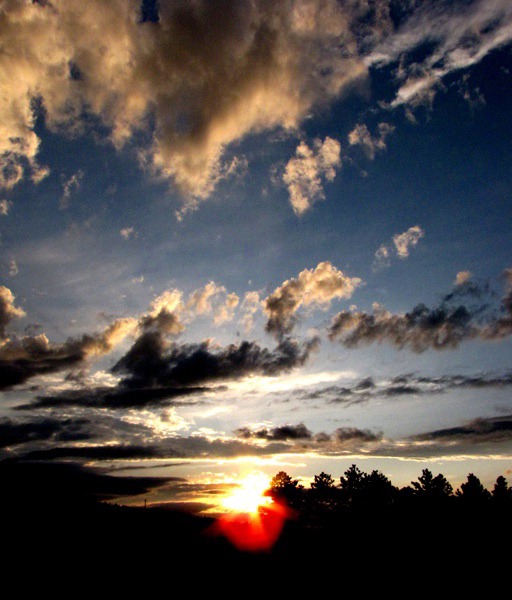South Rockerville Road and Rocks: So off we went south on US HWY 16. In Rockerville, we turned south on Pennington County Road 233 (South Rockerville Road). Along the way, we passed through rolling hills and narrow canyons that are always full of interesting miniature scenes. We also found rock formations that had been hidden in the trees for decades and were now revealed in all their sculptural glories. Black Hills National Forest Road 372 and Flowers: Heading, as usual, for gravel, we turned east on Black Hills National Forest Road 372 into the heart of the burn area. Here, of course, nature's resurgence was amazing. The pine-beetle killed trees had been swept away by fire and replaced by lush grass and a profusion of flowers -- a beautiful demonstration of the centuries-old cycle of life in the forest. All manner of flowers were flourishing in the aftermath of the fire. Fire is a vital part of the life cycle of these plants; adaptations include the requirement of high heat to germinate and ability to grow in the ashy acid soil left after the fire.
Fire opens up the forest floor to life-giving sunlight, and the plants respond! Our understanding of forest ecology has certainly matured since the days when we were kids, and forests were managed as tree farms and hunting plantations. About mid-afternoon, a Black Hills thunder squall started to roll in. Black Hills National Forest Road 718 and Killer Wasps: The storm blew over after cooling the air down considerably, and we struck out into another part of the burn on Black Hills National Forest Road 718.
We make a habit of the road less traveled, of course, and in some cases, it's the road that "hasn't been traveled in a while" -- which leads to some opportunity for axe and tow strap. At one point, I was standing in the road while Louise sought some plant she'd spotted from the rig in a nearby meadow. I heard a very loud whir of wings. It sounded ominous, and would have been severely so in the right circumstances. And if you were a cicada, it was curtains. I beat a measured retreat in the face of this three-inch long monster. Then I noticed the large holes the Cicada Killer Wasp (Sphecius speciosus) had bored in the loose dirt of the road -- a network like a badger would establish and maintain. Truly a top predator in the insect world!
The Way, Way Back: As the cool air started to circulate through the canyons and evening set in, some of the crepuscular woodland creatures started to stir. We drove a little further on, and around the bend of a "side road" -- which basically meant it was on the map but not on the ground much -- we discovered a rock sculpture garden. It was an impromptu museum of natural sculpture and breathtaking in its variety. We drove back toward the paved road after an all-day adventure on two tracks through the grass. Dusk settled in and a few more woodland critters emerged. Battle Creek: We rounded a corner where we could look down into a canyon bottom where Battle Creek meandered through the rocks. Before we found pavement again (Pine Grove/Gregg Road), we saw a few more animals starting to emerge into the cool evening and lush grass. And to top off the day, we got treated to a great sunset. Another amazing day in the Black Hills. Brian and Louise with Photos by Brian. Text and Photos copyright Goin Mobyle LLC. 2009


